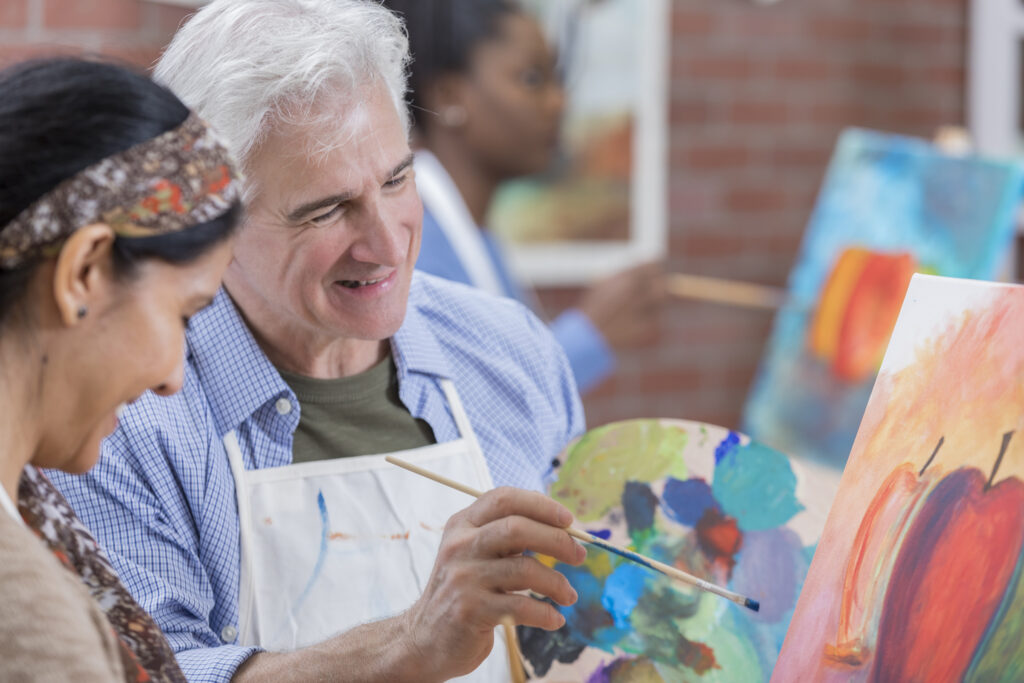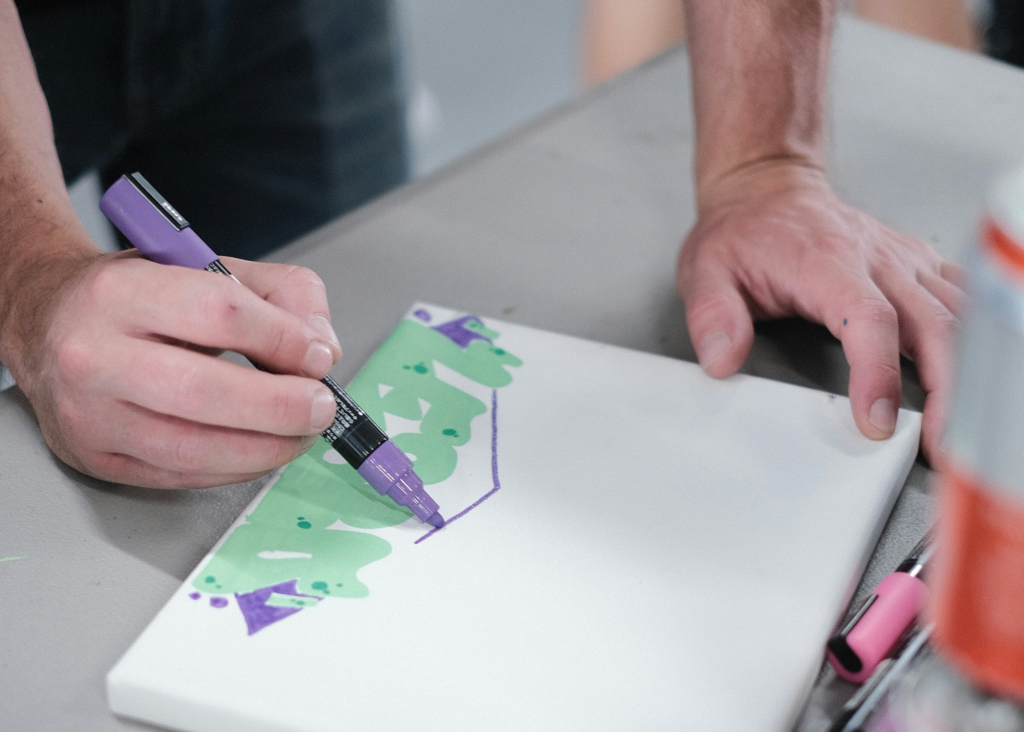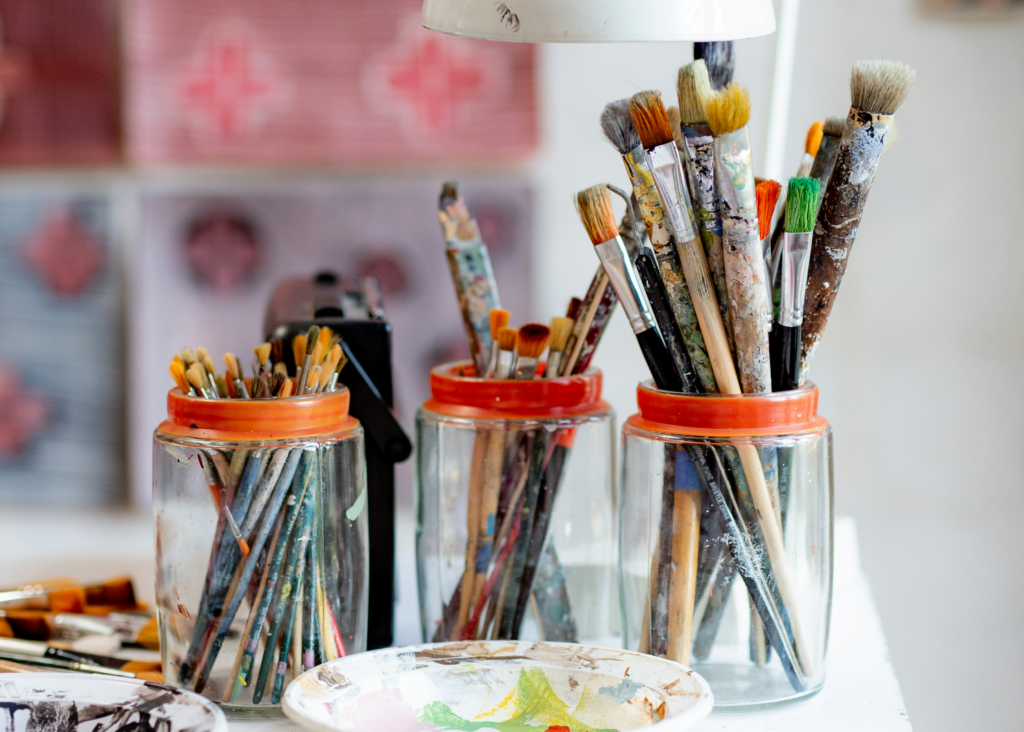Psychosis: how art therapy can help
Article
Psychosis is a term that can cover a wide range of experiences. Here we look at what this can include and how art therapy can help.

What is psychosis?
The term psychosis refers to the way in which some people experience reality very differently to others, which can be distressing. This could mean repeatedly seeing, hearing or sensing things that other people cannot. Some people experiencing psychosis may have a sense of great danger from specific people or groups which other people don’t share. Early intervention is recognised as an important factor in reducing the length and extent of the psychological impact of psychosis.
Who is affected by psychosis?
Psychosis affects more men than women between the ages of 18 and 59, and more women than men from the age of 60. It is estimated that, over a lifetime, about 1% of the population will experience psychosis which will require treatment. This is around 1 in 100 people.

How can art therapy help people experiencing psychosis?
Art therapy is included in the National Institute for Health and Care Excellence (NICE) guidance for psychosis care and treatment. NICE guidelines are evidence-based recommendations for health and care in England and Wales. There is also high-quality research that shows how art therapy can benefit people experiencing psychosis.
Working with an art therapist can be a way for people to explore their experiences and increase their understanding of their feelings in a number of ways.
By putting it on paper I was able to sort of address it and look at the situation and face up to it I suppose rather than bottling it all up which is what I am used to doing.
Service user, 'Exploring art therapy group practice in early intervention psychosis', International Journal of Art Therapy
Art therapy to express traumatic experiences
Research suggests that people are more likely to experience psychosis if they have experienced childhood trauma, especially severe threat from another person. Working with an art therapist provides people with an opportunity to express their thoughts and emotions safely through artmaking, initially without having to put them into words if they feel unable to do so.
One service user explained the relief they felt during the process of making art:
It is good to just get anything out; and I do feel that there is some kind of release from that.
Service user, 'The experience of art therapy for individuals following a first diagnosis of a psychotic disorder: a grounded theory study', International Journal of Art Therapy
Art therapy to make connections with life experiences
For some, art can be used to make connections between their life and experiences of psychosis. In one study, a participant expressed how art therapy gave her the capability to tell the difference between her valued spiritual experiences and experiences that were more appropriately viewed as psychosis.
Art therapy to support interactions in group art therapy
Providing art therapy to groups can bring benefits to participants that may be missed in one-to-one sessions. Supportive group therapy sessions allow the art therapist to create a space that is safe for members to make art, work on their own, or build relationships – whether that is with the therapist or other service users.
In addition, some people who attended an art therapy group have reported that they appreciated the ‘unpressured atmosphere’ of a group, with the artmaking creating a commonality without forcing conversation. The art-room setting itself also provided a focus for those finding it hard to talk.
One service user appreciated the organic way discussions came about in a group setting:
You don’t have to talk about anything, you can just get on with what you want to do and … you don’t have to talk about what is troubling you. In a group we have talked about what is on TV, why we watch scary films, but it brings the conversation out in an easier way.
Service user, 'Exploring art therapy group practice in early intervention psychosis', International Journal of Art Therapy
This non-confrontational sentiment was reiterated elsewhere, with service users valuing how creating art together gave them control over how they chose to communicate:
There was no eye contact or anything because we were all so busy, but that freed up the space to be able to talk about things while you are actually doing it.
Service user, 'The experience of art therapy for individuals following a first diagnosis of a psychotic disorder: a grounded theory study', International Journal of Art Therapy
And, importantly, both the artmaking and the group environment can contribute to a sense of achievement for those who initially struggle with interactions, with research in group art therapy reporting that it was helpful in coping with their psychosis.
Available support
Support is available for those experiencing psychosis; please seek professional help or see our contact details for what to do if you are not feeling ok.

